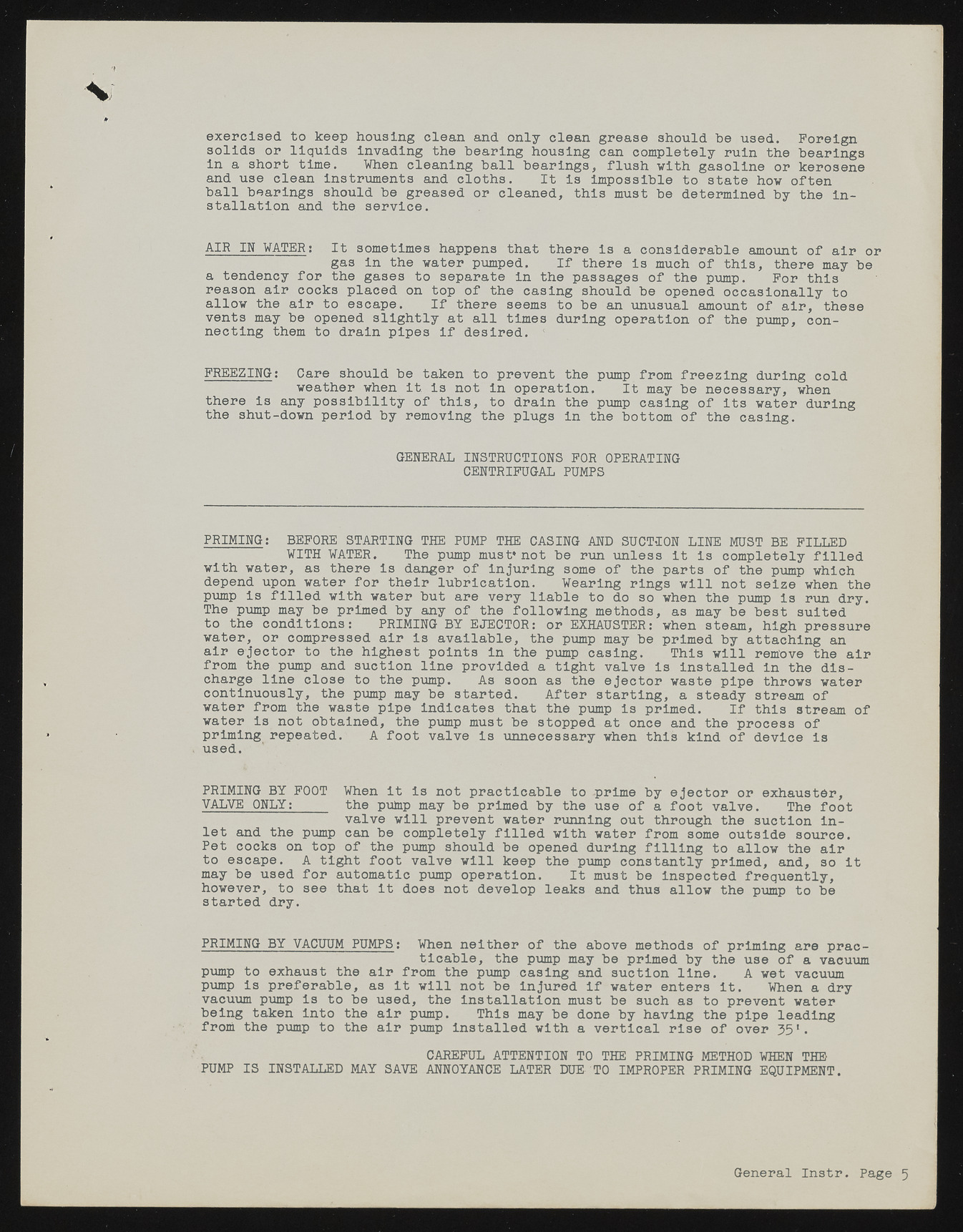Copyright & Fair-use Agreement
UNLV Special Collections provides copies of materials to facilitate private study, scholarship, or research. Material not in the public domain may be used according to fair use of copyrighted materials as defined by copyright law. Please cite us.
Please note that UNLV may not own the copyright to these materials and cannot provide permission to publish or distribute materials when UNLV is not the copyright holder. The user is solely responsible for determining the copyright status of materials and obtaining permission to use material from the copyright holder and for determining whether any permissions relating to any other rights are necessary for the intended use, and for obtaining all required permissions beyond that allowed by fair use.
Read more about our reproduction and use policy.
I agree.Information
Digital ID
Permalink
Details
More Info
Rights
Digital Provenance
Publisher
Transcription
exercised to keep housing clean and only clean grease should he used. Foreign solids or liquids invading the bearing housing can completely ruin the bearings in a short time. When cleaning ball bearings, flush with gasoline or kerosene and use clean instruments and cloths. It is impossible to state how often ball bearings should be greased or cleaned, this must be determined by the installation and the service. AIR IN WATER; It sometimes happens that there is a considerable amount of air or gas in the water pumped. If there is much of this, there may be a tendency for the gases to separate in the passages of the pump. For this reason air cocks placed on top of the casing should be opened occasionally to allow the air to escape. If there seems to be an unusual amount of air, these vents may be opened slightly at all times during operation of the pump, connecting them to drain pipes if desired. FREEZING; Care should be taken to prevent the pump from freezing during cold weather when it. is not in operation. It may be necessary, when there is any possibility of this, to drain the pump casing of its water during the shut-down period by removing the plugs in the bottom of the casing. GENERAL INSTRUCTIONS FOR OPERATING CENTRIFUGAL PUMPS PRIMING: BEFORE STARTING THE PUMP THE CASING AND SUCTION LINE MUST BE FILLED WITH WATER. The pump must* not be run unless It is completely filled with water, as there is danger of injuring some of the parts of the pump which depend upon water for their lubrication. Wearing rings will not seize when the pump is filled with water but are very liable to do so when the pump is run dry. The pump may be primed by any of the following methods, as may be best suited to the conditions: PRIMING BY EJECTOR: or EXHAUSTER: when steam, high pressure water, or compressed air is available, the pump may be primed by attaching an air ejector to the highest points in the pump casing. This will remove the air from the pump and suction line provided a tight valve is installed In the discharge line close to the pump. As soon as the ejector waste pipe throws water continuously, the pump may be started. After starting, a steady stream of water from the waste pipe indicates that the pump Is primed. If this stream of water Is not obtained, the pump must be stopped at once and the process of priming repeated. A foot valve Is unnecessary when this kind of device is used. PRIMING BY FOOT When it is not practicable to prime by ejector or exhauster, VALVE ONLY: the pump may be primed by the use of a foot valve. The foot valve will prevent water running out through the suction inlet and the pump can be completely filled with water from some outside source. Pet cocks on top of the pump should be opened during filling to allow the air to escape. A tight foot valve will keep the pump constantly primed, and, so it may be used for automatic pump operation. It must be inspected frequently, however, to see that It does not develop leaks and thus allow the pump to be started dry. PRIMING BY VACUUM PUMPS: When neither of the above methods of priming are practicable, the pump may be primed by the use of a vacuum pump to exhaust the air from the pump casing and suction line. A wet vacuum pump is preferable, as it will not be injured if water enters it. When a dry vacuum pump Is to be used, the Installation must be such as to prevent water being taken into the air pump. This may be done by having the pipe leading from the pump to the air pump installed with a vertical rise of over 5 5 '. CAREFUL ATTENTION TO THE PRIMING METHOD WHEN THE PUMP IS INSTALLED MAY SAVE ANNOYANCE LATER DUE TO IMPROPER PRIMING EQUIPMENT. General Instr. Page 5

